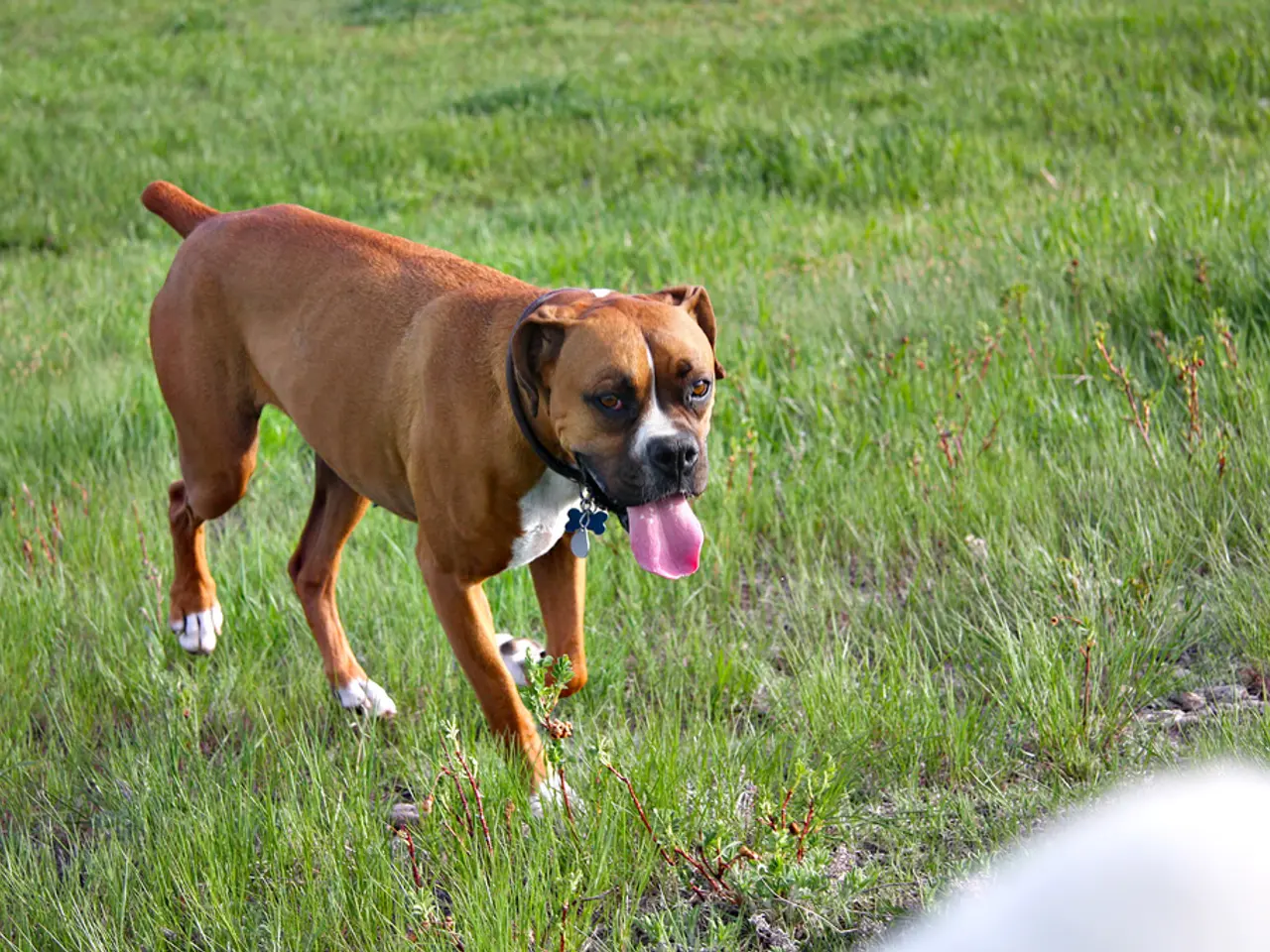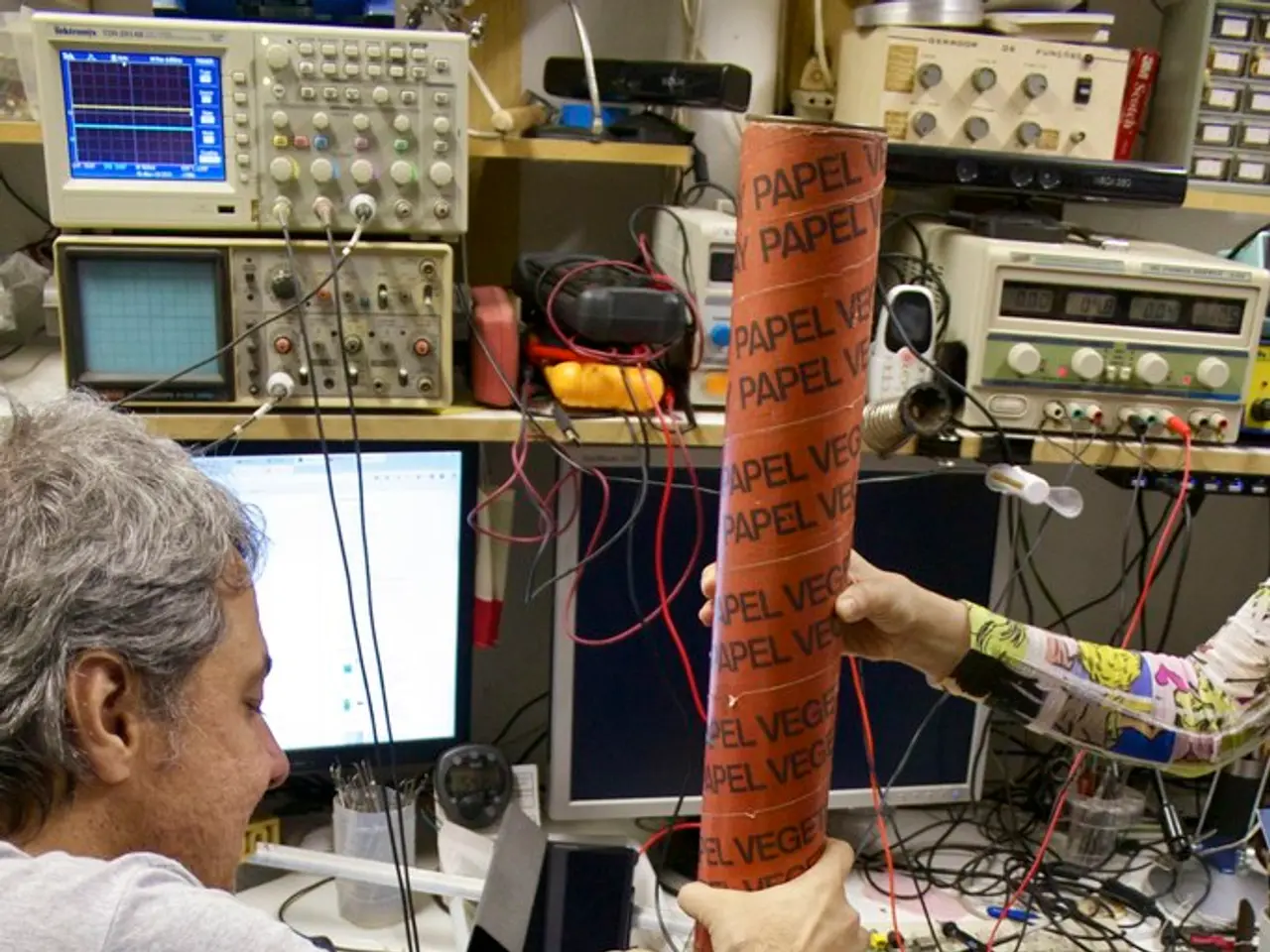Alert raised by specialists following a near-fatal incident of a Cocker Spaniel choking on grass seeds
**Headline:** Common Signs, Prevention Tips, and Dangers of Grass Seeds Affecting Dogs
Grass seeds, including problematic types like foxtails, can pose a significant risk to our canine companions. These small, arrowhead-shaped objects can attach to a dog's fur and burrow into the skin, causing a range of symptoms that vary depending on where the seed becomes lodged.
Here are the most common signs to watch for:
1. **Shaking or tilting the head, or holding the head at an unusual angle:** This often indicates a grass seed in the ear canal. 2. **Limping or lameness:** If a seed is embedded in a paw, especially between the toes, the dog may limp or appear uncomfortable walking. 3. **Excessive licking or chewing at paws:** Dogs may constantly lick or chew their paws, particularly if a seed is causing irritation or has penetrated the skin. 4. **Swelling or discharge between the toes:** Look for red, swollen areas or wounds that may be oozing, which can indicate a buried seed or developing infection. 5. **Persistent scratching, rubbing, or shaking:** Dogs may rub their face, scratch at their eyes, or shake their head if a seed is in the ear, eye, or face area. 6. **Appearing lethargic or in pain:** A dog that seems unusually tired, uncomfortable, or in pain may be suffering from an internal issue caused by a migrating grass seed. 7. **Dribbling or excessive salivation:** If a seed is in the mouth or throat, increased drooling may occur. 8. **Sneezing, nasal discharge, or coughing:** These can be signs of a grass seed inhaled into the nose or respiratory tract. 9. **Redness, swelling, or irritation of the eyes:** A seed lodged in or near the eye can cause noticeable discomfort. 10. **Discomfort in other body areas:** Grass seeds can migrate under the skin, causing abscesses or wounds that may not be immediately visible.
When grass seeds burrow deeply and migrate internally, they can lead to serious infections or even life-threatening complications if they reach organs. If you notice any of these signs—especially head shaking, limping, persistent licking, or unusual swelling—check your dog carefully and consult a veterinarian promptly. Early intervention is crucial to prevent more severe problems.
To minimise the risk of grass seed injuries, regularly inspect your dog’s coat, paws, ears, and mouth after walks in grassy areas. Trimming the hair between your dog’s toes can also help reduce the risk of seeds becoming trapped. It's advisable to avoid walking your dog in areas with tall, dry grass during peak grass seed season.
Sadly, grass seed injuries are more common than one might think, particularly during the summer and early autumn. In fact, 80% of claims made in 2023 and 2024 were between September and October and July and August. If you think your dog might be affected by grass seeds, contact your vet immediately.
A recent case highlights the potential danger of grass seeds. A six-year-old Cocker Spaniel named Mollie is fortunate to be alive after inhaling grass seeds this summer. Her cough and near collapse led to a CT scan and surgery to remove three grass seeds that had punctured her lung. Mollie spent four days in intensive care and has a 10-inch scar and reduced lung capacity as a result of the incident.
In addition to grass seeds, dogs can potentially be allergic to grass, and there are signs to look out for. However, this is not directly related to grass seeds and is not included in the list of common signs.
The Kennel Club has issued a warning to dog parents about the signs of grass seeds affecting dogs, emphasising the importance of vigilance and prompt veterinary care to protect our beloved pets from the discomfort and potential dangers of grass seeds.
- Regularly checking a cat's coat and paws can help prevent grass seed-related injuries, just as we do for dogs.
- Incorporating a health and wellness program for pets in the workplace can foster a positive environment for both employees and their furry companions.
- Science continues to investigate new therapies and treatments for aging pets, focusing on maintaining a high quality of life as they grow older.
- A balanced diet of food specific to a pet's breed is crucial for their overall health and fitness.
- Skin care is essential for pets, as prevention and treatment of conditions like hot spots and mange can be managed through proper grooming and regular check-ups with a veterinarian.
- When forming a health and lifestyle plan for your pet, be sure to consider factors such as regular exercise and mental stimulation to ensure their happiness and well-being.
- Women's health encompasses more than just humans; our pets can also be prone to certain health issues, making preventative care and regular visits to the veterinarian all the more important.
- The fitness and exercise needs of cats can often be overlooked, but incorporating playtime with toys into their daily routine can help keep them fit and active.
- The impact of grass seed injuries can go beyond just dogs, as other pets such as cats may also be affected.
- A focus on pets' health and wellness is a key aspect of lifestyle choices for many pet owners, with various health-focused initiatives and products emerging in the market to support pet owners in Their quest for their pet's well-being.




